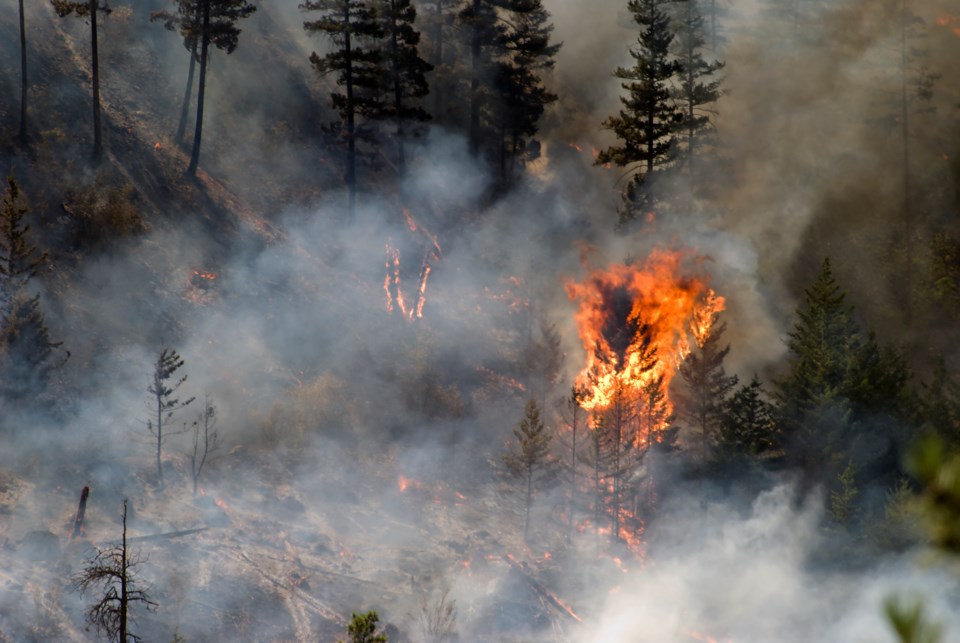Your eyes are burning, your lungs are aching, and it smells oh so bad. … No it is not the burrito your brother ate, it is the Colorado wildfires of 2020. With already added pressures from the stress of a global pandemic, what does this added insult mean for our health? I will tell you what I share with patients at my Centura Health primary care clinic here in Longmont.
Wildfire smoke is a mix of gasses and fine particles from burning vegetation and other materials capable of making even healthy individuals fall ill. Houses, cars and human-made products consumed in the fire add to the smoke's variety of chemicals. These compounds in the smoke put stress on our bodies and can release potentially dangerous molecules into the bloodstream — increasing the chances of blood clots, heart attacks and strokes. Given these illnesses may not be expected in some people, it's essential to acknowledge any concerning symptom — this is especially true in women. Women will often experience different, less recognized heart attack symptoms, like jaw or neck pain.
The plethora of symptoms from wildfire smoke includes coughing, eye irritation, sinus irritation, chest pain, headaches, wheezing, asthma attacks and rapid heartbeat. Of particular note, your children's lungs are still developing and adding air sacs until at least age 8 - this may make them more sensitive to wildfires' insults. An easy example of this is that toddlers have 20 to 50 million air sacs, or alveoli, and adult lungs have 300 million. With six times as many alveoli to keep functioning in the setting of smoke exposure, be mindful if your children seem more out of breath than yourself.
With all this said, what can you do to stay healthy? Stay inside when it is dangerous for you to be outside and use the best home filtration system you can for your living situation. A HEPA filter or MERV filtration system is best; I also recommend getting a new filter for your air condition unit, for those who have AC. There's yet another reason to wear a mask when outside the home. Although not perfect, a proper fitting, non-medical grade N95 mask may offer some protection from the smoke's harmful effects. Particles from wildfires can be as small as 2.5 microns and N95 masks filter out 95% of particles 3 microns or larger. Furthermore, try to limit air pollution in your home, especially during these times. If you smoke, smoke outdoors, and don't fry foods or cook the types that get smoky inside your house.
Considering we've already been inside too much this year, I reviewed some public health journals to provide outdoor activity recommendations during a wildfire. In the absence of access to an air quality index to guide, the Environmental Protection Agency suggests using visibility to guide activity levels. If visibility is greater than 10 miles, moderate activity based on personal sensitivity is OK. If visibility is limited to 5 to 10 miles, sensitive individuals should consider reducing or avoiding outside activity. We should all avoid outdoor physical activity when visibility is less than 5 miles. These general rules of the visibility model are only useful in daylight and you should look for the darkest object and use known distances. Also, the visibility method only applies when the relative humidity is less than 65%.
For now, I would try and limit your exposure while looking for times where the wind favors your ability to go outside. Use the visibility rating to help make informed decisions about when you can get out of your house. Your overall health includes your mental and emotional wellbeing, too, do not take it for granted.
***
If you have topics, questions, or concerns you would like addressed in this column please email [email protected].
***
Editor's note: The Longmont Leader accepts contributions, photos, and op-eds for publication from community members, business leaders and public officials on local topics. Publication will be at the discretion of the editor and published opinions do not represent the views of The Longmont Leader or its staff. To submit a contribution, email [email protected].



